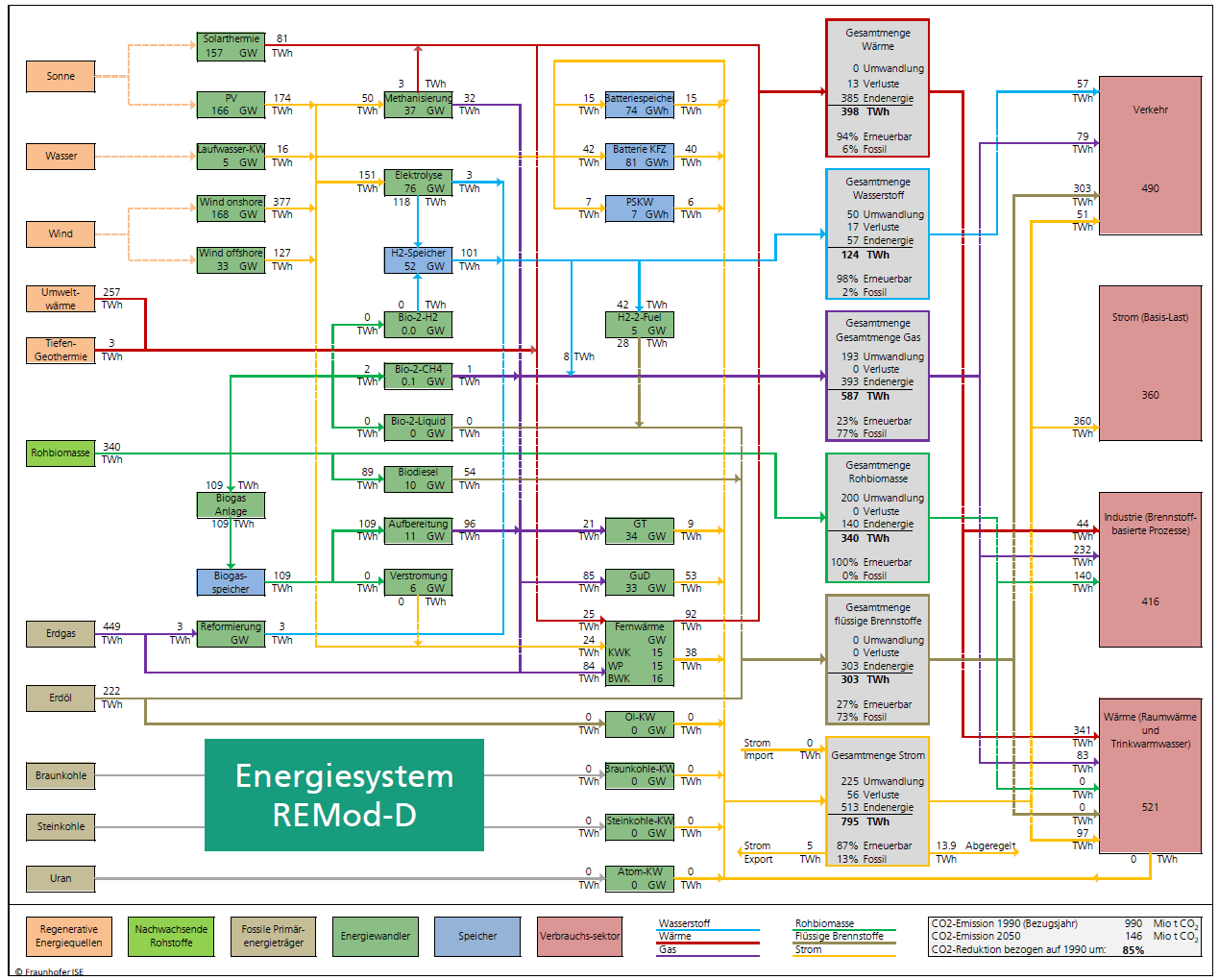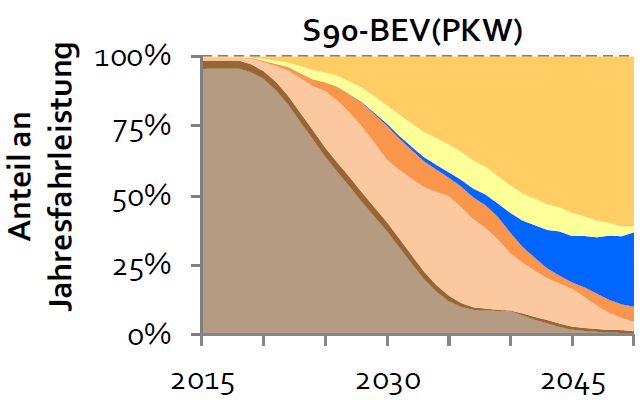| Duration: | 1/2017 - 3/2019 |
| Contracting Authority/ Sponsors: | Bundesministerium für Verkehr und digitale Infrastruktur (BMVI) |
| Project Partners: | Becker Büttner Held; Ludwig Bölkow Systemtechnik; Institut für Klimaschutz, Energie und Mobilität (IKEM) |
| Project Focus: |
IEK – Development of an Integrated Energy Concept for 2050
Electricity Heat Transport Industry


A fundamental transformation of the energy system is necessary in order to achieve the German government’s climate targets based on the 2015 Paris Agreement. With the aim of identifying guidelines for the design of an integrated future energy system, this project used the energy system model "REMod" to calculate scenarios for an energy system in 2050 including a coupling of the electricity, heat, industry and transport sectors. In the analysis, particular attention was paid to the role of the transport sector. Based on the calculated scenarios, total cost analyses for transport operators were derived and proposals for political, legal and regulatory measures were prepared/ deduced.
A consensus exists that achieving the climate targets agreed upon in the 2015 Paris Agreement can only be achieved through a sustainable reduction in energy demand and an intensive expansion of renewable energies. In particular the expansion of renewable energies in the electricity sector plays a special role here, as these will have to cover the increasing electricity demand of the heating, industry and transport sectors. An important prerequisite for the integration of renewable energies is a suitable market design, regulatory framework conditions and their management. In order to derive guidelines for the design of the future energy system for the transport sector, a cross-sectoral approach is necessary.
To identify the necessary conditions for achieving the goals, the scientists at the Fraunhofer ISE used the energy system model "REMod" to calculate various scenarios for a transformation of the German energy system by the year 2050, taking into account feedback from the individual sectors. Based on the calculated scenarios, an overall cost analysis for operators in the transport sector (TCO analysis) was carried out first and then proposals for political, legal and regulatory measures for the transport sector were derived. The scientists at the Fraunhofer ISE analyzed the effects of domestic production as well as the import of synthetic energy sources to compensate for fluctuating power generation on the overall system as essential framework conditions for the scenarios.
The results show that an increasing and far-reaching electrification of the transport sector with direct use of renewable electricity generated from cars, trains and possibly trucks, can decarbonize the transport sector most efficiently. A regulatory framework is needed to create the required infrastructure. To compensate for the time lag between supply and demand due to the increasing generation capacity of wind and solar power, excess electricity can also be used sensibly in the transport sector by converting it into hydrogen, e-methane or PTL fuel. The Renewable Energies Fuel Act (EKraftstoffG), for example, can help to create framework conditions to provide the necessary capacities for electrolysers.